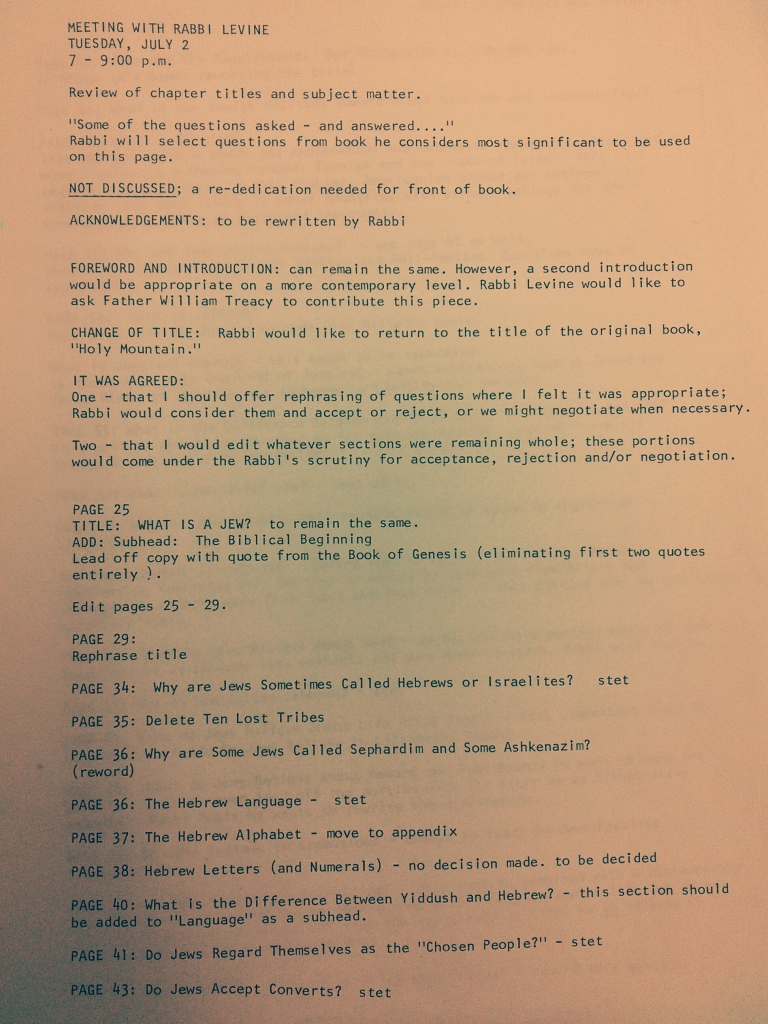What is a Jew?
“What is a Jew?” Chapter One of Rabbi Levine’s 1953 book entitled Holy Mountain . The book outlines several aspects of Judaism ranging from an answer of the opening question to “Do Jews kneel in prayer?” It offers insight into Levine’s definition of a Jew and alterations made in new editions to the book reveal the reasons behind the definition.
So what’s a Jew? Levine clearly states in the chapter that a Jew is not a race nor is it a national identity. He describes Judaism as a choice to have faith in a religious tradition. A tradition based on faith and not laws. Why?
Letter from the Editor
Pictured to the right is a letter from the non-Jewish editor of Levine’s book to Levine. In this letter are potential changes of the book intended to increase the books effectiveness to sell Levine’s message.
Why are the changes important? The changes that the editor makes reveal the social conceptions of Jews at the time the book was written. Levine’s audience is the non-Jewish community so the changes serve to counter common opinions regarding Jewish identity.
What are these changes?
The editor advises Levine to delete an entire section of his book titled “Ten Lost Tribes.” The Native Americans are considered a race. Africans are considered a race. Both groups were thought of in the contemporary time as being inferior to whites and had significantly less rights. Any hint at Jews being a race is rejected by Levine as having the potential to further antisemetism and ultimately hurt Jews.
In a section on Zionism, the editor suggested that any “nationalistic attitude should be discussed thoroughly” in response to comments on Jews potentially having strong feelings for a home country. Levine is addressing the idea that a national identity for Jews would imply that their priority is for a country other than America. Such an idea would be quite distressing for a non-Jewish American concerned with Jewish loyalty.
One of the sections of the book that the editor highlighted was the section titled are there Dogmas in Judaism? Now the editor commented that the “Rabbi was considering rewriting this portion to emphasize Judaism’s flexibility strength is staying away from ‘hard and fast rules.” Levine wants to show that Jews are not lawyers keeping the legalist law, but rather believers in a tradition shares Christian values.
What is the bigger picture?
Rabbi Levine singles in on the importance of faith in Jewish identity as he pushes race and nationality to the side. He removes the separation potential that is inherent in both of those characteristics and instead offers up a viable alternative for the American opinion of Jews. By focusing on faith, particularly one that counteracts negative stereotypes, Levine establishes a Jewish identity that allows for differences that will not restrict Jews from an American identity.


